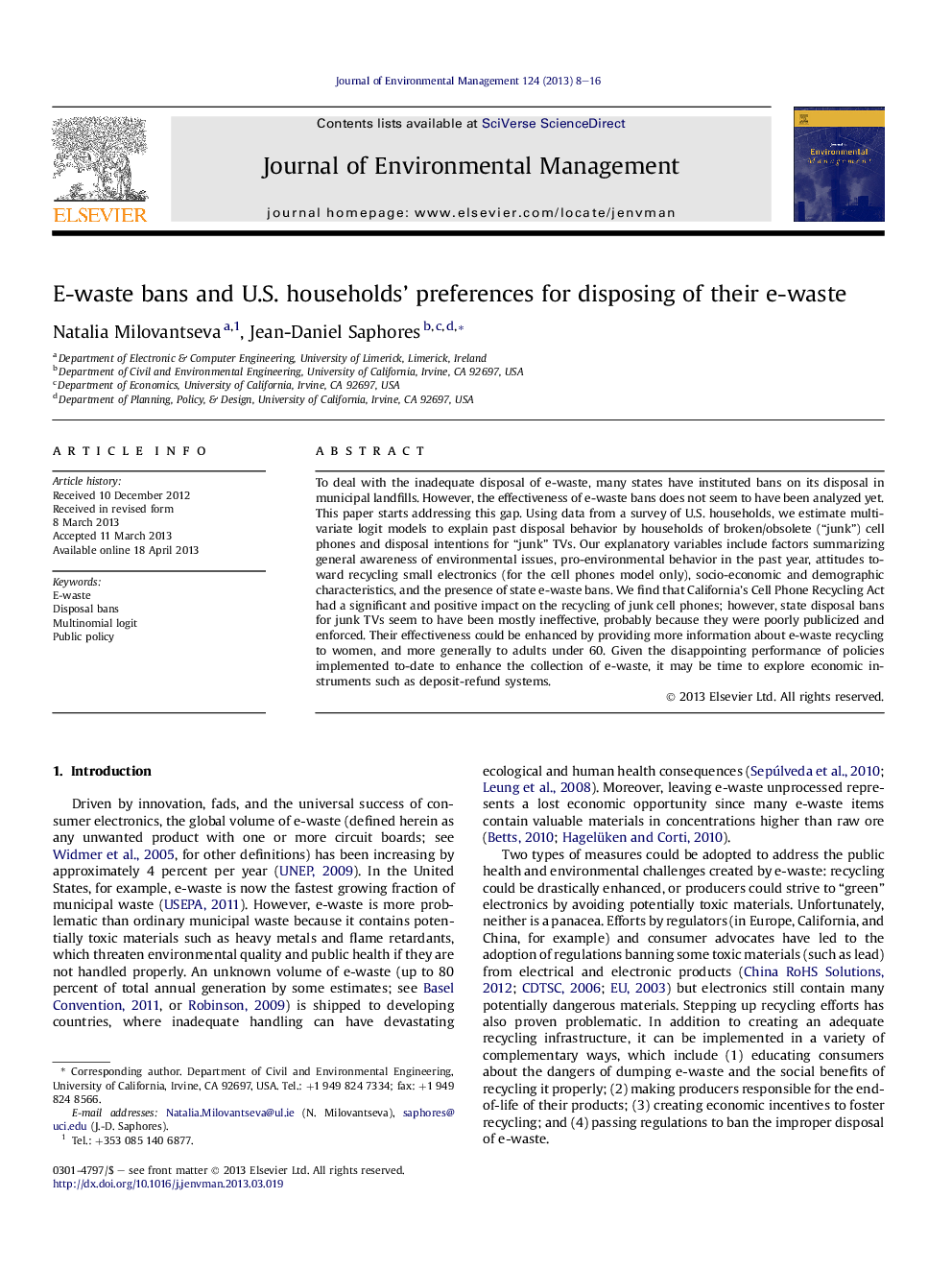| Article ID | Journal | Published Year | Pages | File Type |
|---|---|---|---|---|
| 1056257 | Journal of Environmental Management | 2013 | 9 Pages |
•Our dataset comes from a national survey of U.S. households.•Using multinomial logit models we analyze the disposal of cell phones and TVs.•California's Cell Phone Recycling Act had a positive impact on cell phone recycling.•State disposal bans for junk TVs have been mostly ineffective.•E-waste information campaigns should target women and people under 60.
To deal with the inadequate disposal of e-waste, many states have instituted bans on its disposal in municipal landfills. However, the effectiveness of e-waste bans does not seem to have been analyzed yet. This paper starts addressing this gap. Using data from a survey of U.S. households, we estimate multivariate logit models to explain past disposal behavior by households of broken/obsolete (“junk”) cell phones and disposal intentions for “junk” TVs. Our explanatory variables include factors summarizing general awareness of environmental issues, pro-environmental behavior in the past year, attitudes toward recycling small electronics (for the cell phones model only), socio-economic and demographic characteristics, and the presence of state e-waste bans. We find that California's Cell Phone Recycling Act had a significant and positive impact on the recycling of junk cell phones; however, state disposal bans for junk TVs seem to have been mostly ineffective, probably because they were poorly publicized and enforced. Their effectiveness could be enhanced by providing more information about e-waste recycling to women, and more generally to adults under 60. Given the disappointing performance of policies implemented to-date to enhance the collection of e-waste, it may be time to explore economic instruments such as deposit-refund systems.
